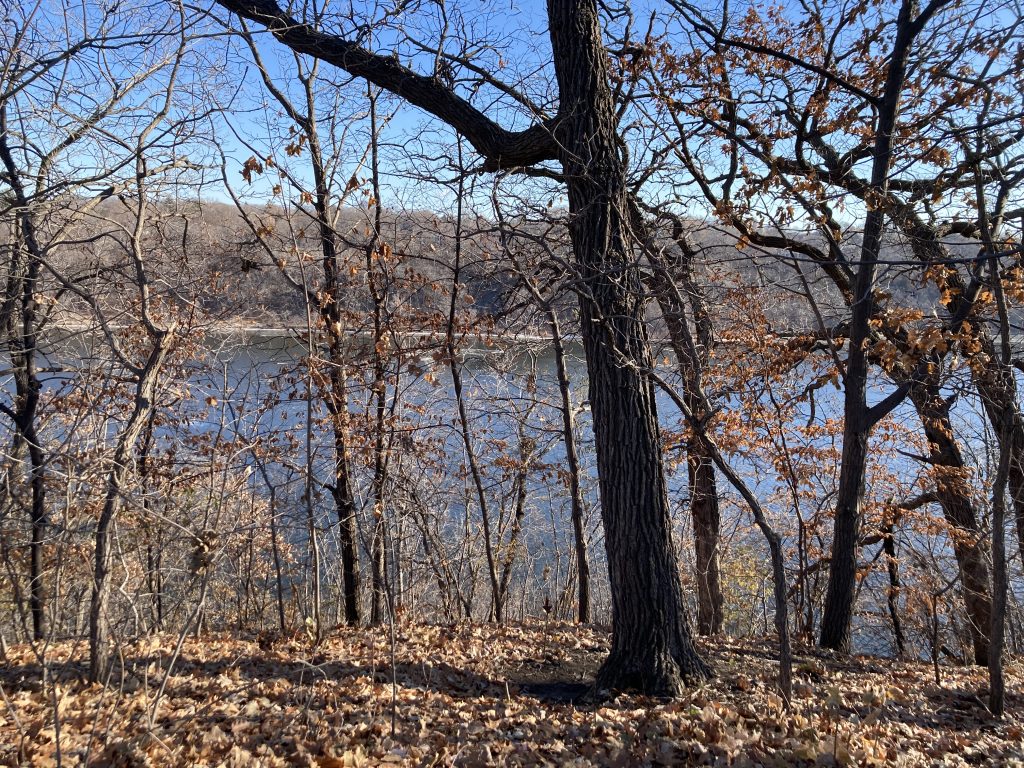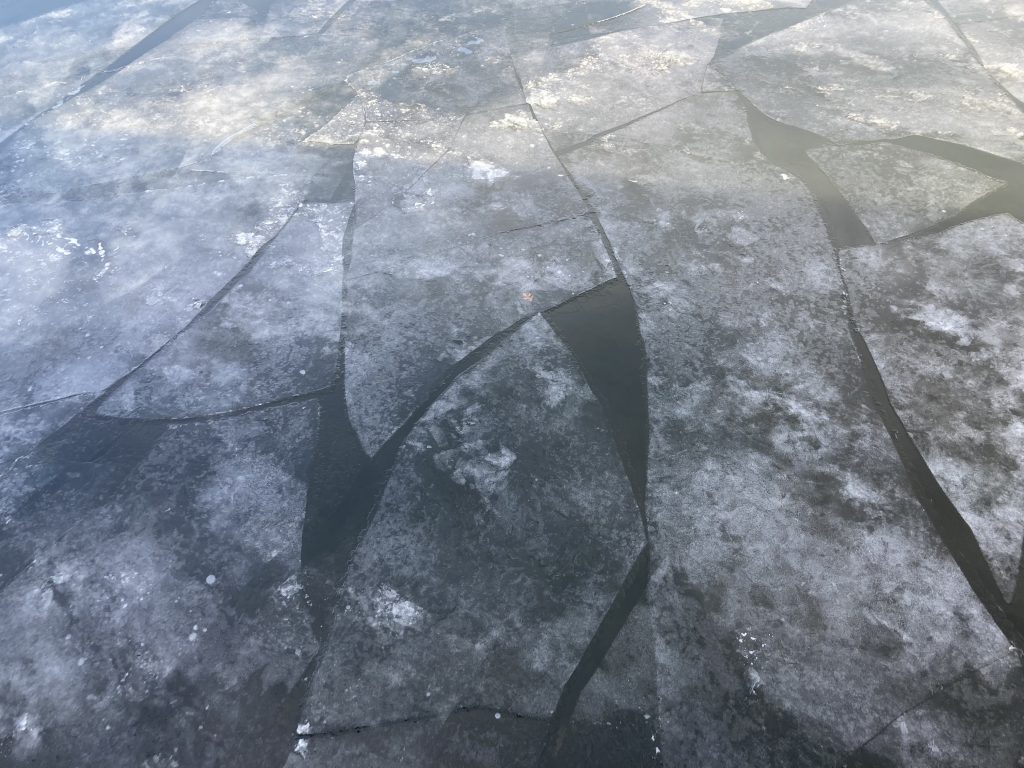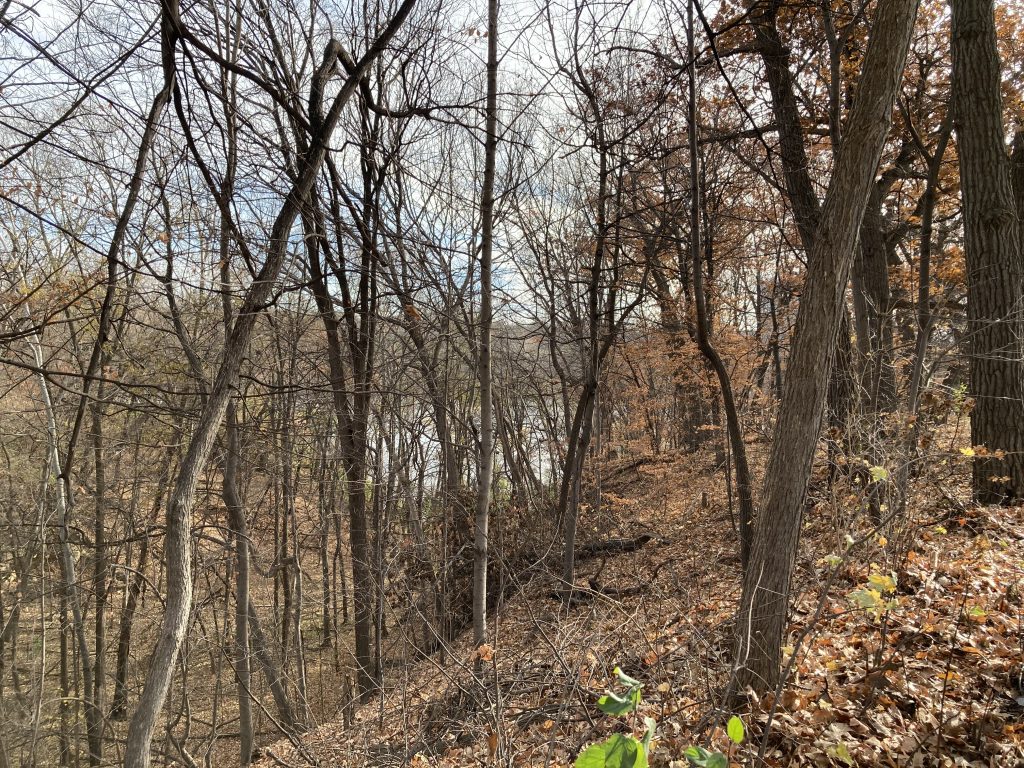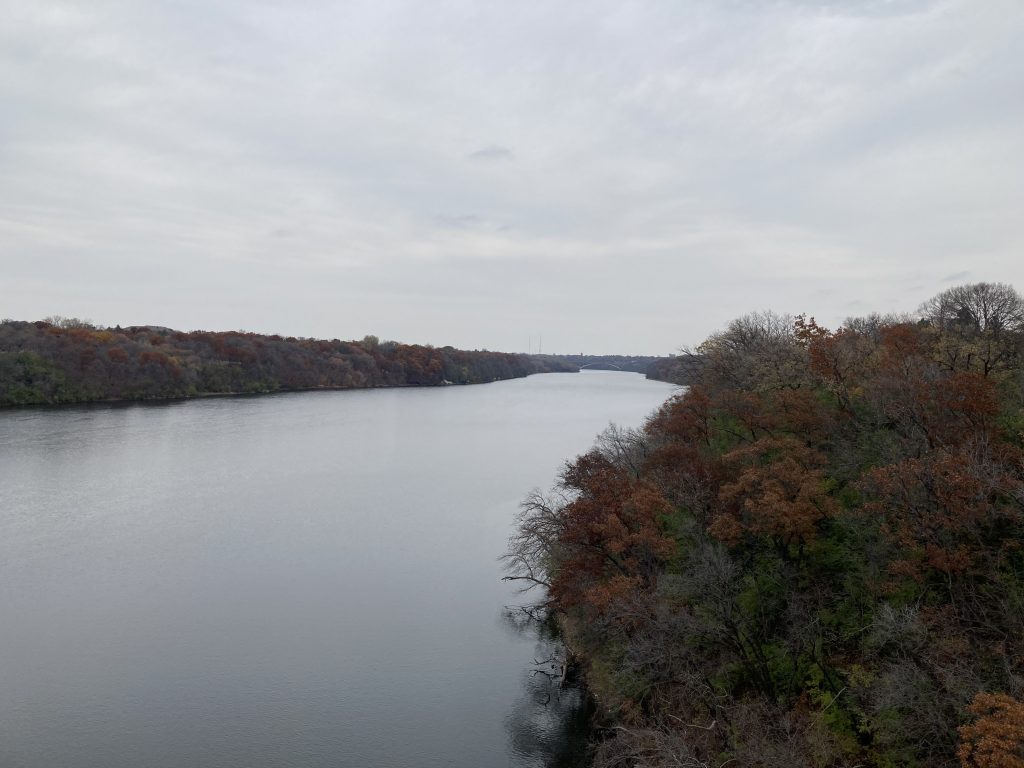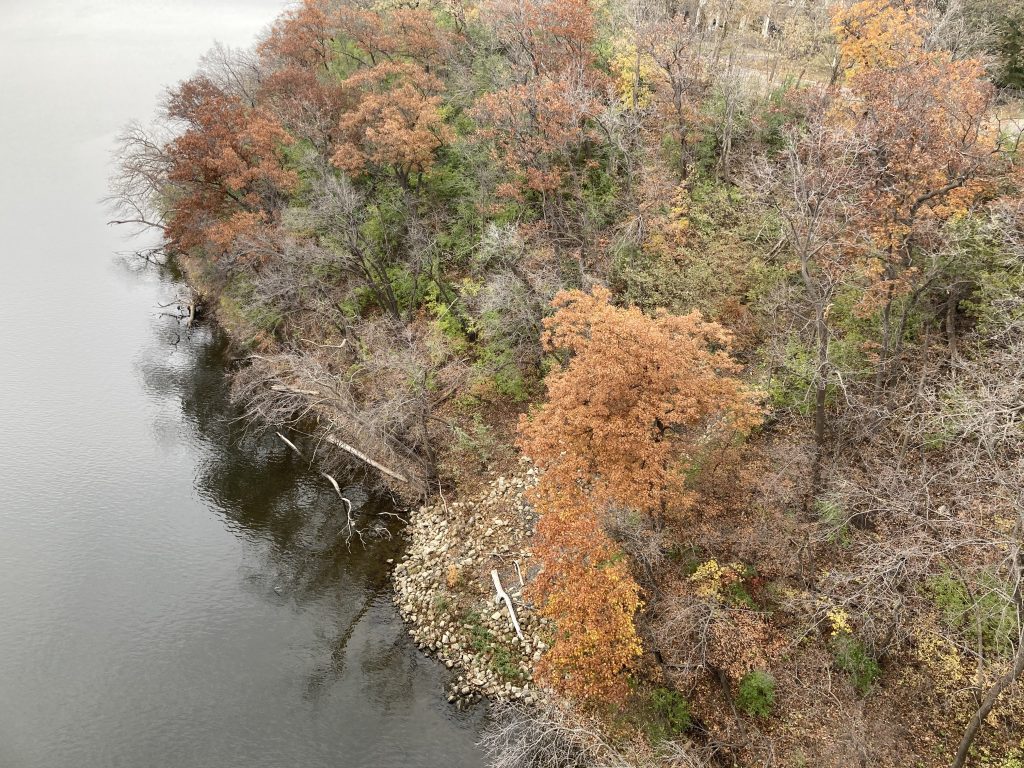5 miles
bottom of franklin hill and back
50 degrees / wind: 14 mph
Warmer this morning, so I wore shorts without tights, a short-sleeved gray t-shirt, and my orange sweatshirt. At the bottom of the hill when I turned around, I took off the sweatshirt and ran the second half with bare arms and legs. The only part of me that was cold was my ears, from the wind. A good run. Greeted Dave, the Daily Walker:
me: Hi Dave!
Dave: Hi Sara! How are you doing today?
me: I’m good. How are you?
Dave: I’m very good. Thanks for asking.
Today I thought about how both of us almost always say the same thing, but they aren’t empty words. We both are always good when we’re outside, moving; we are our best selves: happy, free, able to forget and to admire everything around us.
10 Things
- honking geese, heard not seen, hidden in some brambles
- wind chimes, softly ringing at the start of my run
- mostly gray and overcast, once sun and my shadow — hello friend!
- approaching the Welcoming Oaks, all bare now, a deep red tree — have I ever noticed before that they are a few maples mixed in with the oaks
- several of the Welcoming Oaks had broken branches — the branch that remained looked jagged and gnarled
- an open view down to the floodplain forest! only a few patches of green
- no stones stacked on the ancient boulder
- more chickadee dee dees
- Daddy Long Legs crossing the street
- a slight haze everywhere, covering everything
what the wind can do
A block into my run, the wind picked up and gathered the leaves, pushing them forward. They looked almost like kids running — frantic and fast — towards something fun or away from something boring. This image reminded me of the other day when Scott and I were waiting in the drive-up line at the pharmacy. The wind was pushing an open wrapper. Instead of swirling around, the silver wrapper looked like it was dancing or marching. It didn’t look like a wrapper, but like a bug or some creature that was alive. One more wind/leaves image: Running south, the wind was at my back. A few times it pushed the leaves and we (me and the leaves) raced. I won, of course.
loops, repetitions, projects, time, and echoes
I’m still orbiting around ideas, trying to figure out what to do next. I’m getting closer. I know that it involves my not-yet-finished haunts poems and repetitions and restlessness and the untethering of project from progress, looping and leaving and returning, and time. Time keeps coming up. I’ve thought/written/theorized about time for decades. I even wrote about it in a doctoral exam. On this log, I frequently discuss it — how it drips or disappears when I’m running, my need to slow down the time it takes me to run (pace), rethinking time outside of clocks and the tight boxes of seconds, minutes, hours, trying to imagine time in much larger and longer scales across generations and centuries, Mary Oliver’s eternal vs. ordinary time, Marie Howe’s moments, past present and future Saras, cycles and seasons.
The other day I came across an amazing new endeavor (note: I’m resisting using project here), by Graywolf Press: a series of labs in which several artists come together to discuss, share, collaborate, imagine new possibilities for a theme. The first lab’s theme is time and, as I read through it (I read the transcript first, I’ll listen to their podcast next), I was inspired. Too many ideas to try and write down in this entry. I was particularly struck by Lisa Chen (LC) and her novel (I’m starting it after I finish this entry!), Activities of Daily Living. Here’s how she describes the book:
it’s about this durational artist Tehching Hsieh who was active in downtown New York in the seventies, eighties, nineties. And the, the novel is about a woman named Alice, who’s, has a day job but is trying to make something artistic. And she decides she’s gonna do a project about this artist just because he’s on her mind at the same time that her father is declining from dementia.
And the book is partly organized by going through these six seminal projects that the artist is known for before he stopped making work. And right, so, so the “Time Clock Piece,” he punched a time clock on the hour, every hour for like a year. And he missed, he missed a few. So again, Alice is trying to make a project out of this work so part of it is she’s digging into each of these durational projects and trying to think about what it stimulates or what she can make of it.
In the conversation, LC distinguishes between artist-time and life-time and projects we work on outside of capitalist/work-time. This makes me think of the many discussions I’ve had about being useless and un-productive and engaging in work outside of/in resistance to “the clock.” For me, this sort of time conversation is about what it means to work as an artist — I should return to Mary Oliver and the ways she struggles with this in The Leaf and the Cloud! Haunting questions: what’s the point? but, what does it do?
In the midst of all my thinking about time and progress and projects, I’ve been reflecting on repetitions and echoes in my own work. After rereading an entry from nov 5, 2019, I wrote this in my notes:
Reading through entries from past years on this day and feeling like I could have written/experienced the same thing on a run today — the same river, the same gray sky, the same dying vision, the same words feelings thoughts. This sameness points to a larger time scale and a resistance to progress! and improvement! but I also wonder if it suggests that I’m stuck in the same loop — be outside, move, notice, write. Where is it all going? Does it have to go anywhere? I feel these doubts in these moments when I’m in-between projects, when I have too many doors to enter and I don’t know which one to choose. This tension of restlessness and looping and resisting and in-between and the life of a writer should all be part of this collection. It should be haunted by these themes.
my notes
I also wrote about this theme in an “On This Day” entry this morning:
I’m thinking about my echo discussion for nov 4, 2020 and how an echo repeats but slightly differently each time — fainter or softer or distorted. So much of what I write (and experience) as I move is almost the same from year to year. The view, or lack of view, of the river. The wonderful cold air. How much I love running in the cold. Often I start with, A wonderful run or a beautiful run or another great run. What distinguishes these entries are the small and brief moments and the images they create, like the snow and the bridge. That moment only lasted a few seconds, but it creates the echo here. (if that makes sense.)
Sara, age 49, on November 4, 2023, is thinking a lot of repetition and looping and wondering about the differences between being stuck in a rut of repetition and using the grooves to sing a beautiful song. (not sure if that metaphor works). Put another way: I’ve been doing this practice of moving outside, noticing, writing about it for almost 7 years. So many of the entries contain the same descriptions, or almost the same descriptions. Am I just repeating myself, stuck on the same path, or is each entry an echo, a variation, with (sometimes) slight differences, difficult to discern?
On This Day: November 4
Wow, this is a lot. Right before my run, as I was thinking about all of these things in a kind of jumbled mess, this idea flashed in my head: find the echoes. Start with the moments, over the 7 years of writing in this log, in which I repeat myself (sometimes word for word) and put them together into some sort of chant or small poem or something. Sprinkle them throughout “Haunts.” Mix them in with other examples of echoes — in the geography, the history, the setting? How many echoes can I find?
